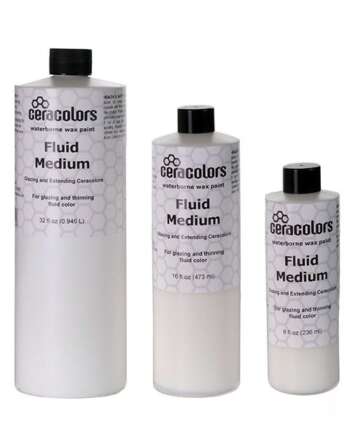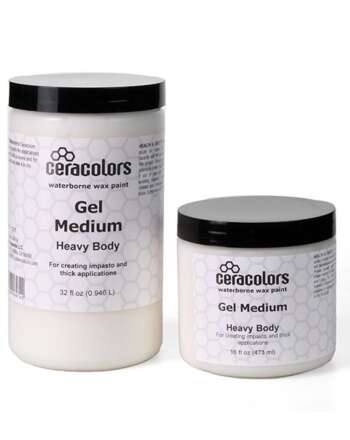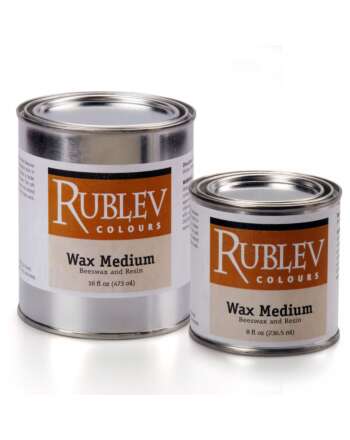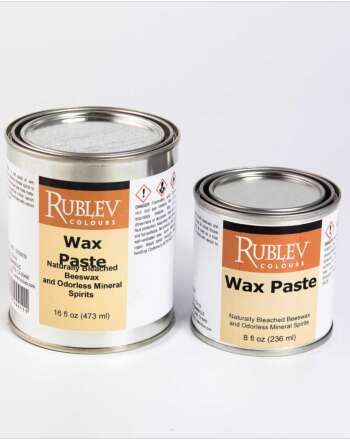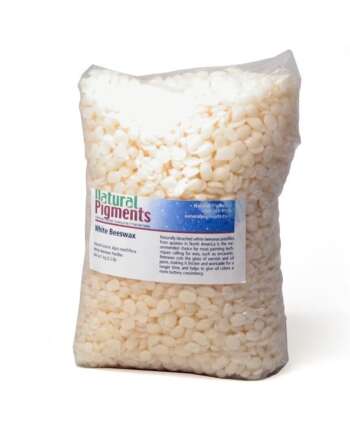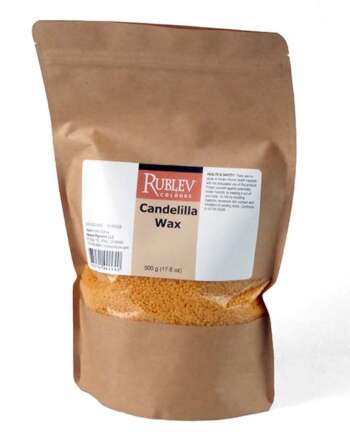Cold wax is a wax painting medium consisting of a soft paste of beeswax or other waxes mixed with solvents and often other ingredients, such as resins. The cold wax paste is mixed with oil paint to add body and transparency and build up thick paint applications.
Encaustic and Cold Wax Painting Mediums
Ceracolors—Non-Toxic and Solvent-Free Cold Wax Painting Mediums


For Path to Limestone Canyon, Erik used Ceracolors water-soluble wax paint made by Natural Pigments. Though it’s a relatively new product, Erik says, ”Ironically, it is based on the ancient Punic wax of the past used in Greece and Rome; specifically the old plaster wax paintings in Pompeii that are found in the preserved rooms. So I would imagine these materials will last for a long time in the right conditions.”
What is Ceracolors?
Ceracolors is water-soluble wax paint made from a blend of natural and naturally-derived waxes that can be used for encaustic and cold wax painting techniques. They are fast-drying colors suitable for all supports used for encaustic painting, yet they do not require special tools or heated instruments. Use any brush suitable for water-based paint. Once dry, Ceracolors can be further sculpted and manipulated in any cold wax and encaustic painting techniques.
Ceracolors Mediums, Gels, and Pastes offer artists unlimited control of Ceracolors paint. Use Ceracolors mediums to control transparency, viscosity, and consistency. Ceracolors Mediums can be considered colorless wax paints, as they are composed of the same waxes as Ceracolors paints. They are the “glue” or binder that dry to form paint films.
Ceracolors are made by Natural Pigments. Please read our description of Ceracolors for more information. For information about the permanence and composition of Ceracolors, visit Ceracolors Composition and Permanence.
Visit our Swatch and Pigment guide for details on Ceracolors hand-painted color swatches and where to find pigment information.
Frequently Asked Questions
What is cold wax medium?
What are the disadvantages of encaustic and cold-wax paint?
The main disadvantage of encaustic or hot wax paint is that it must be kept in a molten state to apply to the painting surface. Modern tools, such as electric hot plates and heating irons, have made this much easier, although not trivial. The primary disadvantage of cold-wax paint is the solvents used to dissolve solid wax. Solvents, such as turpentine and mineral spirit, used to dissolve beeswax and other natural and synthetic wax, pose a significant health hazard. Ceracolors eliminate both these disadvantages because it is wax made soluble in water so that it can be used with brushes for water-based paints and does not need heated tools to apply it. However, Ceracolors can still be manipulated with hot tools once it dries.
Is encaustic permanent or long-lasting?
Encaustic is one of the world's most ancient and long-lasting painting mediums that contemporary artists have rediscovered. Encaustic paintings are durable—the beeswax is impervious to moisture, making them resistant to changes in relative humidity. Beeswax does not yellow or darken with age.
What are the best surfaces to apply encaustic and cold-wax paint?
Encaustic and cold-wax paint are best applied on a rigid, absorbent, and heat-resistant substrate. Wood is the traditional surface for encaustic painting and makes excellent, stable supports. Stretched canvas is not recommended. Encaustic and wax paint is not flexible and may crack as the canvas expands and contracts with temperature and relative humidity changes.
What kind of wax do you use for encaustic painting?
Beeswax is the traditional wax used in encaustic painting. Commercial encaustic mediums are made with filtered, bleached beeswax and dammar resin. However, dammar was not used in historic encaustic paintings of Egypt. Natural waxes such as carnauba and candelilla wax can be added to increase hardness and provide other properties to beeswax encaustic mediums. Synthetic waxes such as paraffin and microcrystalline wax can also be used, but beeswax is the type most commonly used in contemporary encaustic painting.





